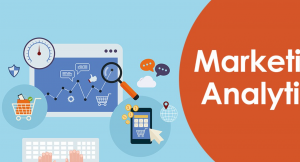Understanding Digital Marketing Analytics: The Backbone of Modern Marketing
Understanding Digital Marketing Analytics: The Backbone of Modern Marketing
Blog Article
In today’s digital age, businesses rely heavily on website marketing to reach and engage their audience. But how do companies determine their online marketing efforts are effective? The answer lies in digital analytics for marketing. This field has evolved into an essential component of marketing strategies, providing businesses while using insights they must optimize each campaign, understand their audience, and drive better results.
What is Digital Marketing Analytics?
Digital marketing analytics is the method of collecting, analyzing, and interpreting data related to internet marketing campaigns. This data comes from various online sources like websites, social media platforms, e-mail marketing, and paid for advertising campaigns. The goal is usually to understand how well marketing work is performing, identify areas for improvement, and ultimately, drive business growth.
Key Components of Digital Marketing Analytics
Data Collection: The foundation of digital marketing analytics is data. This data might be quantitative (e.g., site traffic, sales) or qualitative (e.g., customer feedback, social media marketing comments). Tools like Google Analytics, social networking insights, and customer relationship management (CRM) systems are generally used to gather this data.
Performance Metrics: These are the key performance indicators (KPIs) that companies use to measure the success of the marketing efforts. Common metrics include:
Traffic Sources: Understanding where your traffic comes from—whether it’s organic search, social media, email, or pay for traffic—is crucial.
Conversion Rate: The percentage of visitors having a desired action, like making a purchase or becoming a member of a newsletter.
Bounce Rate: The percentage of visitors who leave your internet site after viewing only 1 page. A high bounce rate may indicate that your content isn’t resonating using your audience.
Customer Lifetime Value (CLV): The total revenue a company can expect from one customer over the course of the relationship.
Data Analysis: Once details are collected, it must be analyzed to discover patterns, trends, and insights. This might be done through various methods, including statistical analysis, predictive modeling, and machine learning. The goal is always to turn raw data into actionable insights.
Reporting and Visualization: Presenting data in the clear and understandable method is essential for making informed decisions. Dashboards and reports are generally used to visualize data, which makes it easier for stakeholders to find out how campaigns are performing and where improvements may be made.
Optimization: The insights gained from digital marketing analytics should be accustomed to optimize marketing strategies. This could involve adjusting ad spend, refining audience targeting, or tweaking content to better align with customer preferences.
The Role of Digital Marketing Analytics in Business Strategy
Digital marketing analytics plays a pivotal role in shaping business strategies. Here’s how:
Data-Driven Decision Making: With accurate data and insights, businesses may make informed decisions about where to allocate their resources for the greatest impact. This leads to more effective use of marketing budgets and ROI.
Personalization: Analytics helps businesses understand their potential customers on a deeper level, enabling the crooks to create personalized marketing experiences. By segmenting audiences and tailoring messages to specific groups, businesses can increase engagement and conversion rates.
Competitive Advantage: Companies that leverage digital marketing analytics can remain ahead of the competitors by quickly transitioning to changes in industry. Whether it’s answering emerging trends or optimizing a campaign in real-time, a chance to act swiftly based on info is a significant advantage.
Customer Insights: Understanding customer behavior and preferences is vital to building strong relationships. Analytics provides insights into what customers want, how they interact with your brand, and what influences their purchasing decisions.
Challenges in Digital Marketing Analytics
While online marketing analytics offers many benefits, what's more, it comes with challenges:
Data Overload: With so much data available, it may be overwhelming to determine which metrics matter most. Focusing on a bad data can bring about misguided strategies.
Integration Issues: Businesses often use multiple tools and platforms, rendering it difficult to integrate data from different sources right into a single, cohesive view.
Privacy Concerns: With increasing scrutiny on data privacy, businesses should be careful about the way they collect and use customer data. Compliance with regulations like GDPR is crucial.
Skill Gaps: Analyzing data requires specialized skills, instead of all businesses contain the in-house expertise to totally leverage digital marketing analytics.
The Future of Digital Marketing Analytics
As technology is constantly evolve, so too will internet marketing analytics. The future will probably see greater using artificial intelligence (AI) and machine learning how to automate data analysis and provide even deeper insights. Predictive analytics can be more sophisticated, allowing businesses you may anticipate customer needs and behavior with greater accuracy. Additionally, as data privacy concerns grow, we should expect to see more emphasis on ethical data collection and usage practices.
Digital marketing analytics has stopped being a luxury but essential for businesses that want to thrive in the digital landscape. By leveraging data, companies can optimize their marketing efforts, better understand their clients, and ultimately achieve their business goals. As the field continues to evolve, those who embrace internet marketing analytics is going to be well-positioned to achieve an increasingly competitive market.